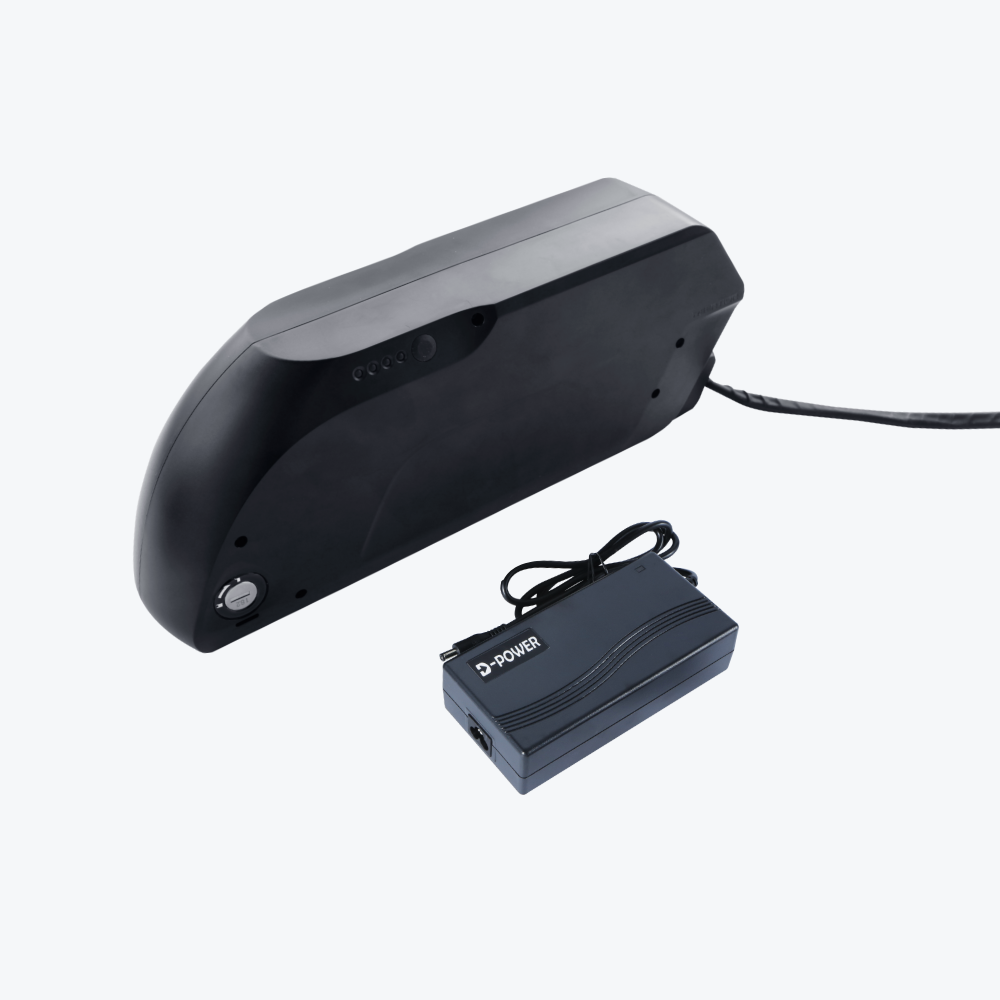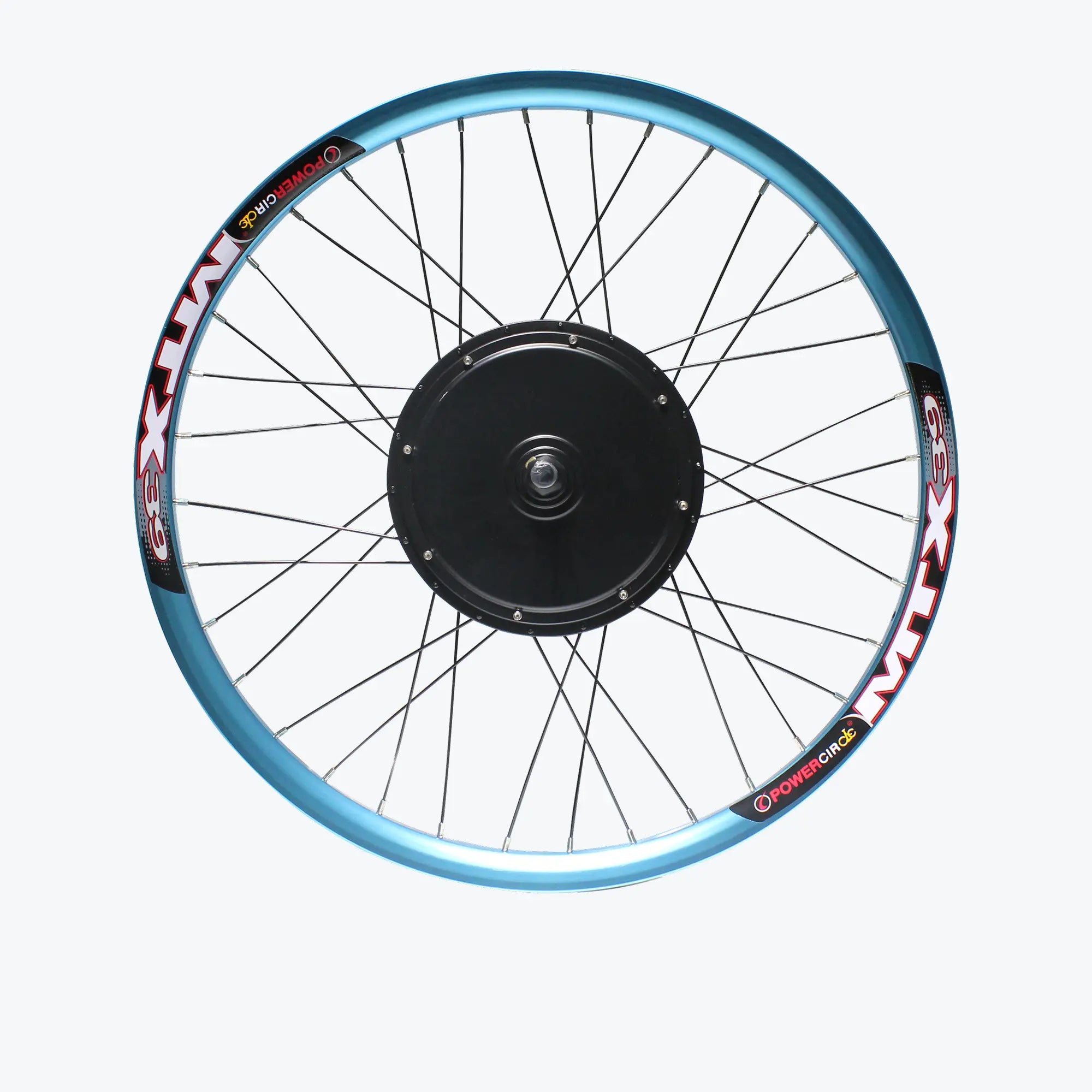Elektrische fietsen worden met de dag populairder. Elektrische fietsen lijken qua ontwerp, onderdelen en geometrie op generieke fietsen. Ze worden echter aangedreven door elektromotoren in plaats van pedalen. Oplaadbare e-bikebatterijen voeden deze elektromotoren.
Wat zijn eBike-accu's en wat doen ze voor uw fiets?
Ebike-accu's kunnen de krachtpatser van de ebike worden genoemd. Ze leveren de elektrische energie die nodig is om de motor, remmen en andere elektrische componenten van de fiets van stroom te voorzien. Ebike-accu's zijn verantwoordelijk voor het bereik, de snelheid en de algehele functionaliteit van de ebike. Door de accu's van de ebike te scheiden, wordt voorkomen dat de fiets een elektrische fiets is.
Soorten batterijen en hoe u de beste voor u kiest
Ebikes zijn compatibel met een breed scala aan batterijtypen. Voordat u echter een keuze maakt, moet u rekening houden met verschillende factoren. Deze factoren zijn onder andere de oplaadtijd, het batterijvermogen en het bereik dat het uw fiets geeft. Hier zijn verschillende soorten ebike-batterijen die u voor uw ebike kunt overwegen:
Lithium-ion (Li-ion)
Li-ionbatterijen zijn een van de beste batterijen in de e-bike-industrie. Een combinatie van lithiumpolymeer, ijzerfosfaat en mangaan wordt gebruikt bij het maken van deze e-bikebatterijen. Door deze elementen te combineren, heeft de resulterende batterij een langere levensduur dan verschillende van zijn tegenhangers.
Vergeleken met andere ebike-accu's hebben Li-ion-accu's een indrukwekkende combinatie van gewicht en capaciteit. Echter, vanwege de vele voordelen van Li-ion-accu's, zijn ze behoorlijk prijzig.
Nikkel-cadmium (NiCd)
Net als de Li-ion accu zijn ook nikkel-cadmium accu's prijzig. Ze doen echter wel hun werk. Veel mensen kiezen voor loodzuuraccu's omdat ze goedkoop zijn. Het nadeel van zo'n keuze is dat ze vaak moeten inleveren op het bereik van de accu. Met een nikkel-cadmium accu kunt u lang met uw e-bike rijden.
Helaas is het Cadmium-component van NiCd-batterijen moeilijk te recyclen omdat het gevaarlijk is. NiCd-batterijen raken snel verouderd omdat ze een hoge ontladingssnelheid en een slechte elektriciteitsdichtheid hebben. Als u veel waarde hecht aan de levensduur van e-bike-batterijen, zijn NiCd-batterijen mogelijk geen geschikte keuze.
Lithium-kobalt (LCo) e-bikebatterijen
Vanwege het lichte en krachtige karakter van lithium wordt het vaak gebruikt om verschillende e-bikebatterijen te produceren. LCo-batterijen zijn een variant van lithium-e-bikebatterijen. Ze hebben een hogere dichtheid dan verschillende andere lithiumbatterijen. Ze laden daarom snel op en hebben een betrouwbare levensduur van de batterij. Daarom hoeft u niet zoveel geld uit te geven aan het constant vervangen van batterijen.
Loodzuuraccu's
Loodzuur is een van de populairste e-bikebatterijen. Vergeleken met andere e-bikebatterijen is het de goedkoopste. Dit maakt het de voorkeurskeuze voor mensen met een beperkt budget.
Echter, loodaccu's voor e-bikes hebben een korte levensduur. Gecombineerd met dit nadeel zijn ze omvangrijk en hebben ze "weersafhankelijke prestaties". Bij lage temperaturen raken loodaccu's voor e-bikes sneller leeg, zelfs als ze niet worden gebruikt. Vanwege de vele nadelen die aan dit type e-bike-accu zijn verbonden, worden ze vaak door fabrikanten van e-bike-accu's weggegooid.
Nikkelmetaalhydride
Nikkelmetaalhydride ebike-accu's zijn perfect als u een gemiddelde fietser bent. Het is een goede balans tussen de korte levensduur van loodzuuraccu's en de lange levensduur van lithium-accu's. U moet echter wel een reserveaccu meenemen op dagen dat u een lange reis wilt maken. Doe dit om te voorkomen dat u gestrand raakt door een lege accu.
Lithium Mangaan
Lithium Mangaan is een andere indrukwekkende fietsaccu gemaakt met Lithium. Hoewel het relatief nieuw is op de markt, heeft het een lange levensduur en een prijzenswaardig bereik. Vanwege de lange levensduur van Lithium Mangaan accu's, hoeft u zich geen zorgen te maken over de levensduur van uw accu tijdens lange ritten.
Lithium-ion-polymeer
Lithium-ion-polymeer heeft niet zoveel bereik als de andere lithium-ebike-accu's. Toch is het makkelijker te hanteren en te verplaatsen. De reden hiervoor is dat Li-ion-polymeeraccu's geen vloeistof bevatten. Daarom hoeft u geen beschermende hoezen te gebruiken om ze te hanteren.
Hoe u voor uw batterij zorgt, zodat deze zo lang mogelijk meegaat
Zorgen voor uw ebike-accu is essentieel om de levensduur van uw accu te verlengen. Doe dit om te voorkomen dat uw accu niet zo lang meegaat als zou moeten.
Schakel de fiets uit als u hem niet gebruikt
Het uitschakelen van uw e-bike wanneer u deze niet gebruikt, is een effectieve manier om de levensduur van uw e-bike-accu te verlengen. Zo'n gewoonte zorgt ervoor dat de accu niet snel leeg raakt. En dus is er geen behoefte meer aan eindeloos opladen.
Rek uw batterij niet te lang op
Laat altijd rustperiodes voor uw e-bikebatterijen. Consistent gebruik van de e-bikebatterijen zonder pauzeperiodes zal uw batterijlimieten overschrijden. Dergelijke gebruikspatronen zullen leiden tot een herhaald patroon van opladen en ontladen. Hierdoor worden de batterijen belast en kunnen ze snel kapotgaan en beschadigd raken.
Maak altijd gebruik van de juiste rijmodi
Als u de turbo boost-modus gebruikt voor al uw ritten, zal uw accu sneller kapotgaan dan verwacht. Beperk het gebruik van de turbo-modus tot heuvelachtig terrein, om de levensduur van uw accu te verlengen. Gebruik de lage en gemiddelde instellingen voor gemakkelijkere en gladdere terreinen.
Voorkom overbelasting van de fiets
Als e-biker kunt u het gewicht van de e-bike mogelijk niet controleren. U kunt echter de lading op de fiets beperken. Overbelasting van de e-bike, vooral op heuvelachtig terrein, zorgt ervoor dat de accu sneller leegloopt. Dit komt omdat de motor meer werk moet doen, waardoor er meer vermogen van de accu wordt gevraagd. Herhaaldelijk leeglopen zorgt ervoor dat u vaker moet opladen, wat de algehele levensduur van de fiets beïnvloedt.
Tips om uw batterij optimaal te gebruiken
Om het maximale uit uw e-bike-accu te halen, moet u op het volgende letten:
Laad uw batterij op vóór het eerste gebruik
Laad uw nieuwe batterijen op voor het eerste gebruik. Dit proces duurt vaak langer dan normaal opladen. Dit zal echter de levensduur van uw ebike-batterij verlengen.
Voorkom dat de batterij volledig leeg raakt voordat u hem opnieuw oplaadt
Zorg er koste wat kost voor dat uw accu leeg raakt voordat u hem oplaadt. Als u uw accu leeg laat lopen voordat u hem oplaadt, heeft dat invloed op de laadcapaciteit van uw accu. Dit zal de levensduur van uw accu in gevaar brengen en u zult hem binnen de kortste keren moeten vervangen.
Zorg ervoor dat de batterij beschermd is tegen extreme weersomstandigheden
Extreem warme en koude weersomstandigheden zijn schadelijk voor uw ebike-accu. Zorg er altijd voor dat de accu uit de buurt van sneeuw en zon blijft. Koel weer is de beste temperatuur voor uw accu om maximaal te functioneren.
Gebruik altijd de originele oplader
Verschillende laders hebben hun eigen invoer en uitvoer. U moet dus het gebruik van verschillende laders vermijden. Naast het gevaar dat de levensduur van uw e-bike-accu wordt verkort, kan het ook leiden tot een explosie.
Veelgestelde vragen over eBike-accu's
Hoe bewaar ik mijn accu tijdens de winter?
Verschillende ebike-accu's hebben de neiging zichzelf te ontladen tijdens het winterseizoen. Opslag in dit seizoen vereist dus enige dynamiek. Voordat u uw accu in de winter opbergt, moet u ervoor zorgen dat deze ongeveer 50% is opgeladen. Dit zorgt ervoor dat de accu voldoende lading heeft om zichzelf te ontladen zonder de batterijcellen te beïnvloeden. Om ongewenste activering te voorkomen wanneer deze niet in gebruik is, moet u ervoor zorgen dat de accu is losgekoppeld van de ebike voordat u deze opbergt. Bewaar de accu op een koele plaats en laad deze op wanneer u deze weer gaat gebruiken.
Wat betekent “geheugeneffect”?
Het geheugeneffect treedt op wanneer een batterij wordt opgeladen voordat deze volledig ontladen is. In dit soort gevallen onthoudt de batterij zijn laatste capaciteit vóór de laatste lading. Als gevolg hiervan zal de gebruikstijd van de batterij afnemen. Dit fenomeen is niet zo wijdverbreid bij lithiumbatterijen, aangezien deze weinig of geen geheugeneffect hebben.
Mijn batterij wordt warm tijdens het opladen. Is dit een slecht teken?
Het is normaal dat batterijen opwarmen tijdens het opladen. Het is een normaal verschijnsel waar u zich niet al te veel zorgen over hoeft te maken.
Wat is de betekenis van zelfontlading?
Zelfontlading is wanneer batterijen geleidelijk aan hun lading verliezen, ook al worden ze niet gebruikt.
Is het verstandig om de accu van mijn e-bike 's nachts op te laden?
De meeste batterijen gebruiken slimme laders om te detecteren wanneer ze volledig zijn opgeladen en zichzelf los te koppelen. Zorg er echter als voorzorgsmaatregel voor dat u de lader loskoppelt wanneer de batterij is opgeladen.
Wat is de betekenis van batterijlevenscyclus?
Dit is het aantal keren dat u uw batterijen kunt opladen voordat ze beschadigd raken.
Wat is de levensduur van een e-bike-accu?
Ebike-accu's hebben geen statische levensduur. De levensduur van een accu is afhankelijk van veel factoren. Deze factoren omvatten omgevingsomstandigheden, ontladingsdiepte, laadspanning, gebruik en laadsnelheid.
Conclusie
Het verzorgen van uw ebike-accu's is net zo belangrijk als het kiezen van de juiste ebike-accu. Dit kan een uitdaging zijn als u nieuw bent in de wereld van ebikes. Met de bovenstaande tips wordt het makkelijker om voor uw accu te zorgen en de levensduur ervan te verlengen.




























